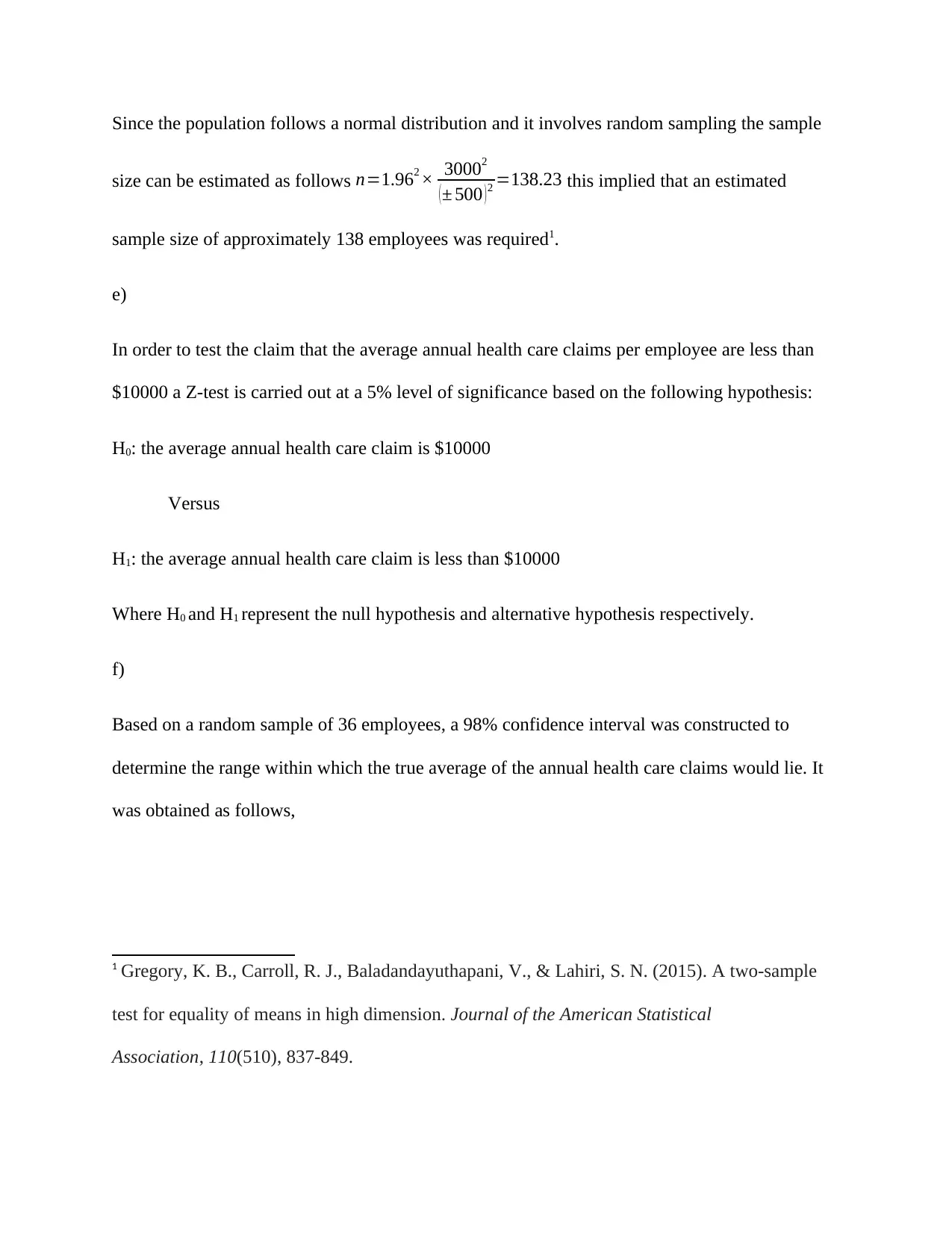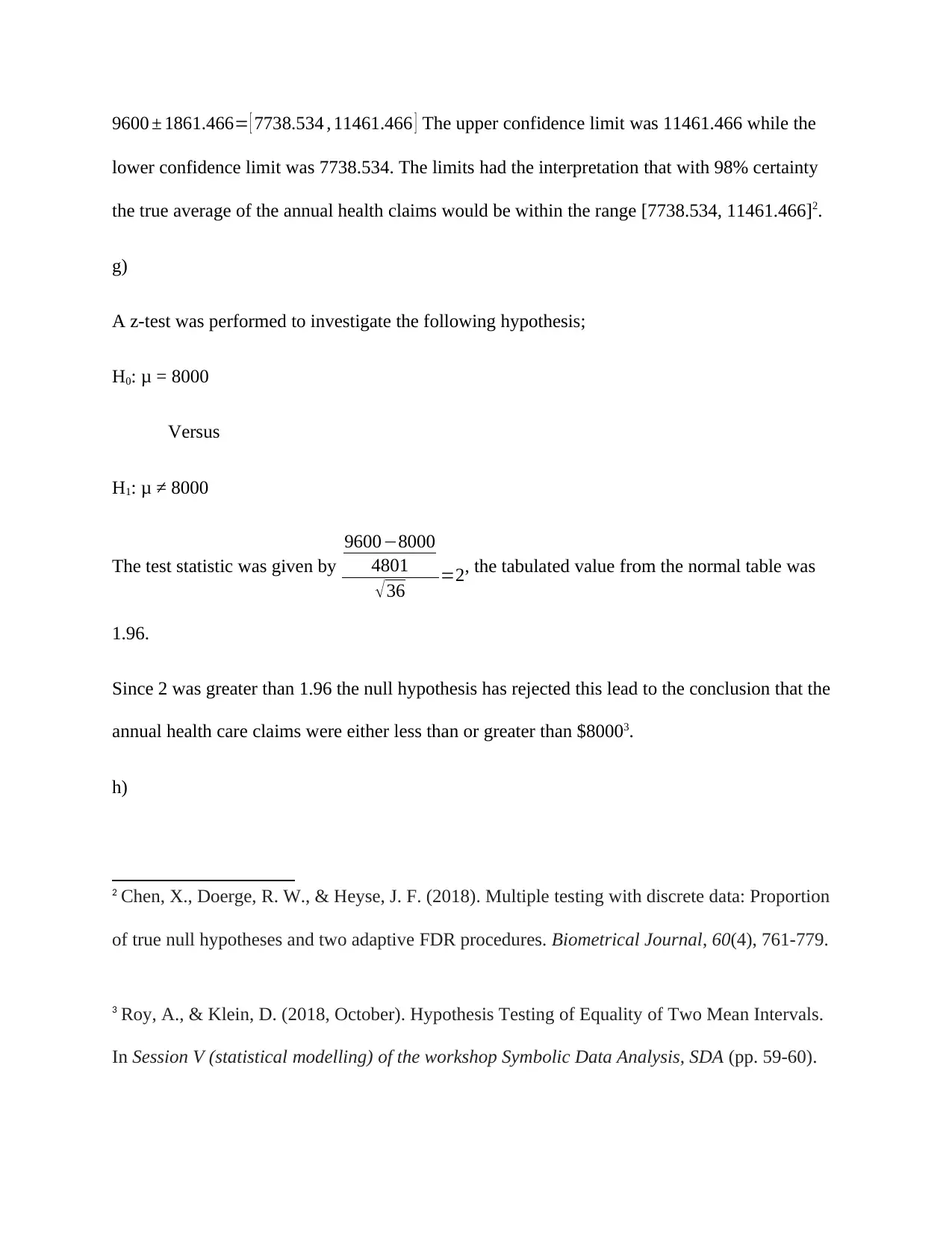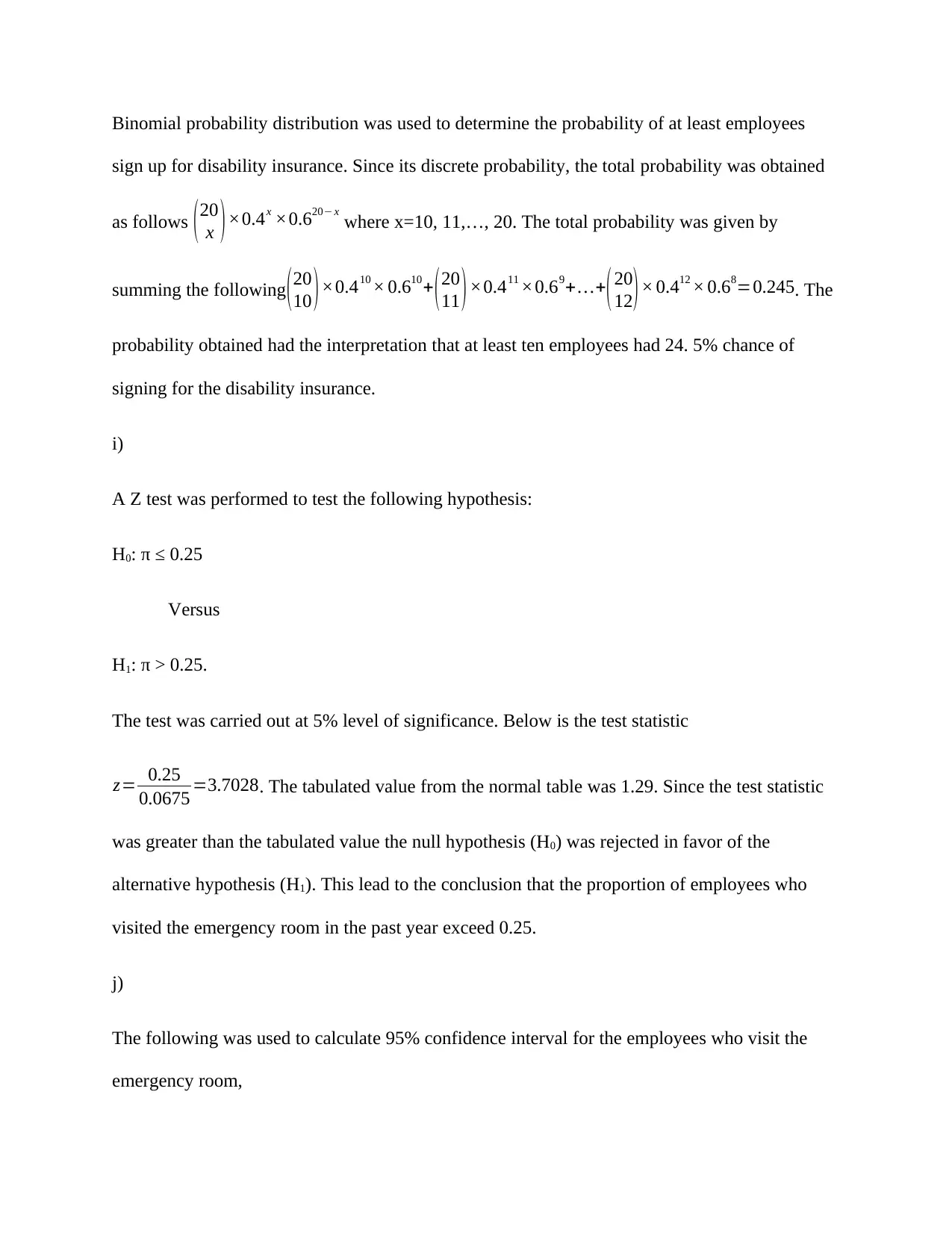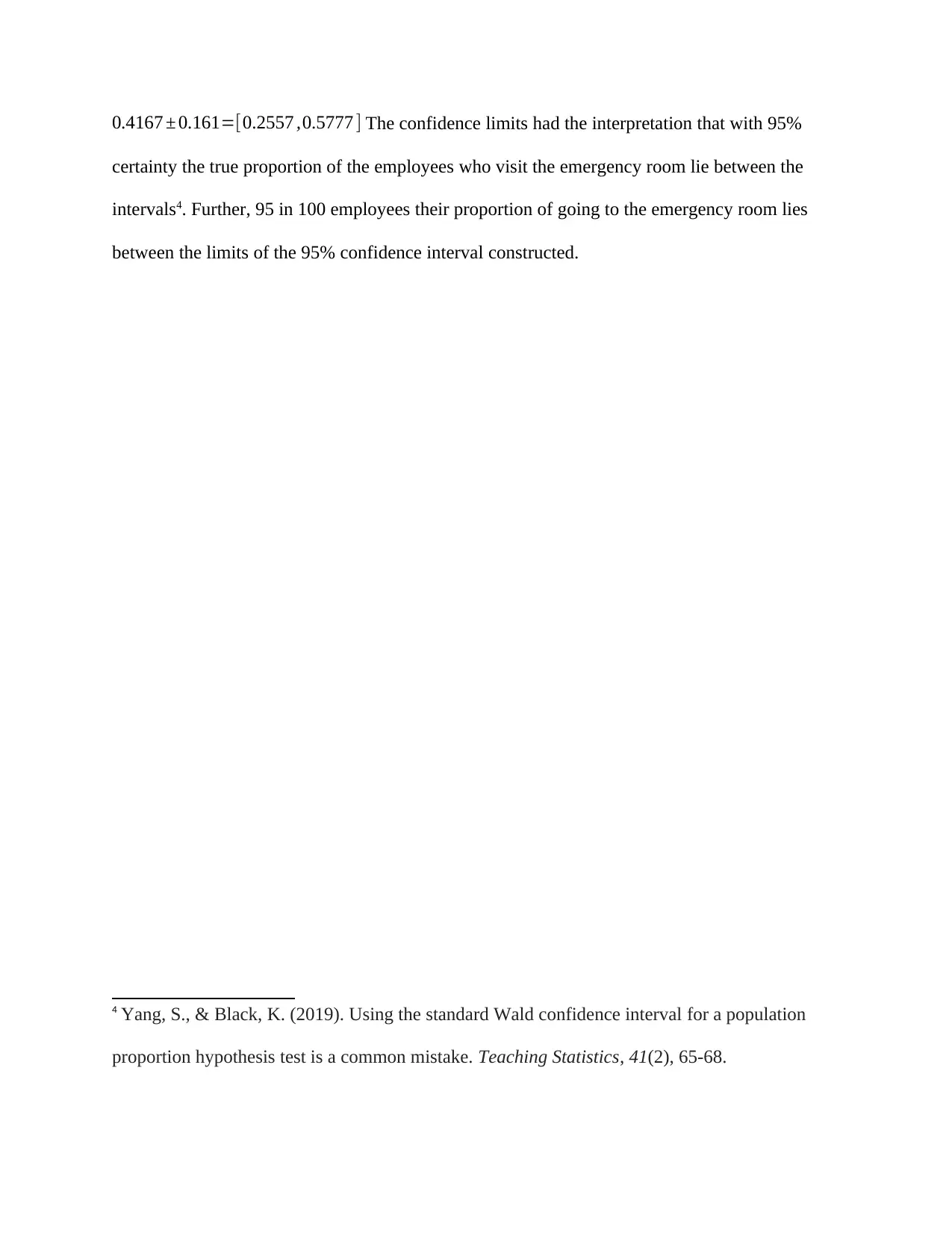MBA700 Homework 2: Health Care Negotiations Case Study and Analysis
VerifiedAdded on 2022/11/19
|5
|642
|165
Homework Assignment
AI Summary
This document provides a comprehensive solution to the MBA700 Homework 2 assignment, which focuses on health care negotiations within a business context. The solution addresses various aspects of health care cost analysis, including probability calculations, statistical tests, and confidence intervals. It explores scenarios such as the probability of employees exceeding certain health care claim amounts, the use of Z-tests to evaluate average annual health care claims, and the construction of confidence intervals to determine the range of true average claims. Furthermore, the solution incorporates binomial probability distribution to analyze the probability of employees signing up for disability insurance and employs Z-tests to assess the proportion of employees visiting the emergency room. The assignment covers several statistical concepts and their application in a practical business scenario, demonstrating how to interpret and apply statistical findings to make informed decisions regarding health care costs and employee benefits.
1 out of 5











![[object Object]](/_next/static/media/star-bottom.7253800d.svg)